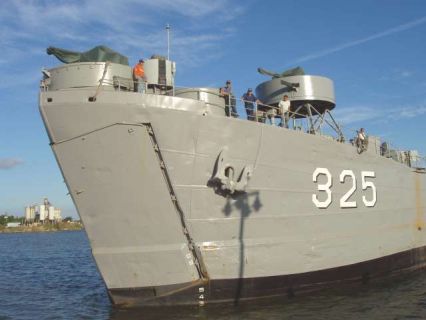2005 ARRL Field Day
The Aero Amateur Radio Club and B.R.A.T.S. will be joining forces for the 2005 ARRL Field Day operation.
The location is the same as in previous years, Camp Genyara near the Pennsylvania state line (see map).
Field Day operation will start at 2pm, Saturday June 25th and end at 2pm, Sunday June 26th. We will be starting
setup on Friday afternoon at approximately 3-4pm. Our objective is to have at least one station on the air Friday
for casual QSOs and then complete setup on Saturday. The final station configuration has not yet been determined
but there will be at least one hf voice transmitter, one hf cw transmitter, and one vhf/uhf multimode transmitter.
The location is rustic. We have 2 large pavilions with picnic tables. One is used for the operating positions and
the kitchen and the other is used for sleeping. There is a large field available for pitching tents, etc. You will
need to supply your own food and drink. Electricity is supplied by generator.
For additional information, contact Bob Landis, WA3SWA. Home phone (410) 663-1565 from 6pm until 10 pm. Email
address is wa3swa (at) cavtel (dot) net.
AO-51 to be configured in Mode V/S for Field Day
For Field Day
2005, the AMSAT "Echo" (AO-51) satellite will be configured as an FM repeater in
Mode V/S. The uplink will be 145.920 MHz with the 67 Hz tone enabled. The
downlink will be 2401.200 MHz. To give users the opportunity to test their Field
Day stations, AO-51 will be configured in Mode V/S during two periods leading up
to Field Day. From May 19 until May 24 the satellite will be in Mode V/S in
support of satellite demonstrations at Dayton Hamvention. From June 18 until
June 26 (ie, the weekend and entire week before Field Day) AO-51 also will be in
Mode V/S. These operating sessions will give Field Day participants an
opportunity to check out their Field Day satellite stations ahead of time. The
AO-51 team says working the Mode S downlink on AO-51 does not require expensive
equipment nor even a satellite dish. Some operators have successfully copied the
AO-51 S band downlink with minimal antennas, such as patch antennas, dipoles
with corner reflectors or a simple 3.5-turn helix. If your downconverter's IF is
on VHF (which most are), a handheld transceiver or mobile FM rig will work fine
as a downlink receiver. The uplink antenna can be any good omnidirectional
mobile system. If you have not worked the S band downlink on AO-51 previously, a
few passes monitoring the downlink and practicing Doppler correction will be
very helpful. The Doppler shift on an AO-51 pass is approximately ±50 kHz.
There's more information available on setting up to use Echo on Field Day on the
Web site of AMSAT Vice President for Operations Mike Kingery, KE4AZN.
BRATS Public Service
- Sunday, June 5: BRATS answer phones at MPT's Channel 67 in Owings Mills, 7PM (email W3GXK)
- June 11-12: MS 150 Bike Tour on the Eastern Shore, begins and ends at Salisbury University.
For info, check BRATS home page or contact N3CVA.
- Monday, July 4: Towson 4th of July Parade, Contact Ian, N3CVA

|
|
LST-325 Plans Amateur Radio Operation During East Coast Cruise (May 3, 2005)
The LST-325, a 327-foot World War II vessel designed to transport and deploy
tanks and troops during coastal beach landings, will have Amateur Radio aboard
when she cruises up the East Coast and back this spring and early summer. The
historically significant vessel is officially a cruising museum ship, but she
still carries the USS LST-325 name and World War II marine radio call sign NWVC.
For this voyage, LST-325 will be on the Amateur Radio bands as WW2LST.
|
1 |
2 |
3 |
4 |
5 |
6 |
7 |
8 |
9 |
10 |
11 |
12
BRATS Home Page



